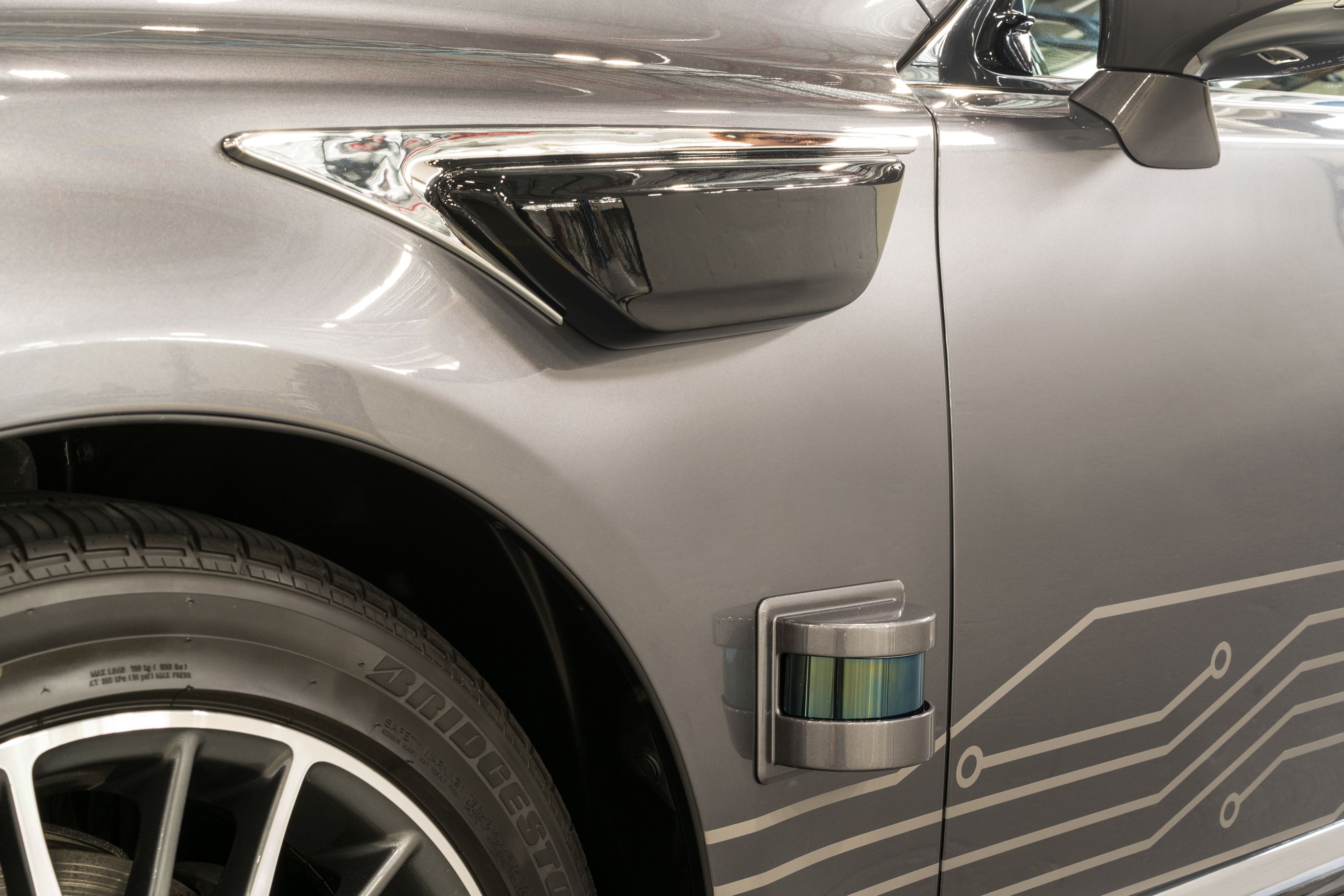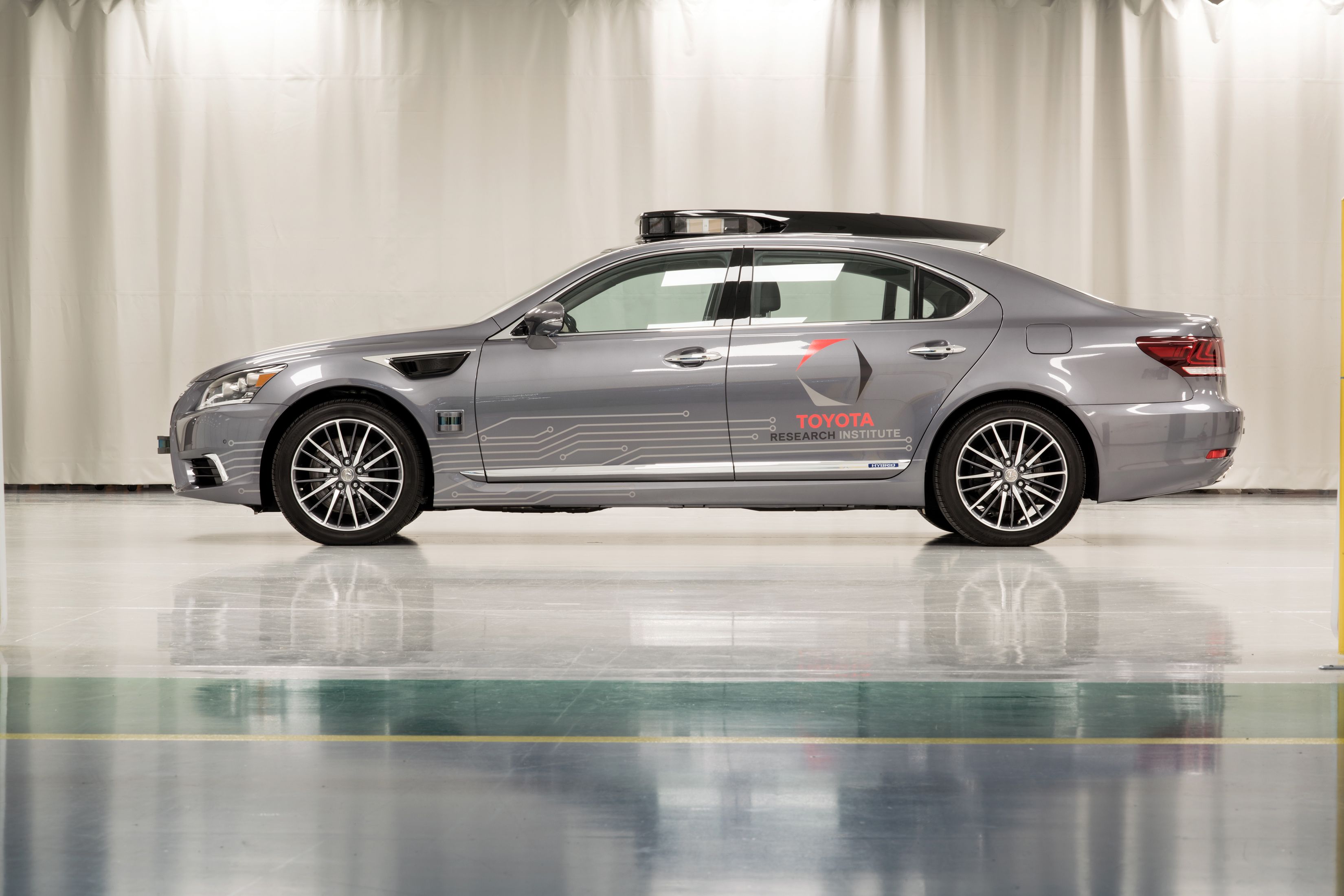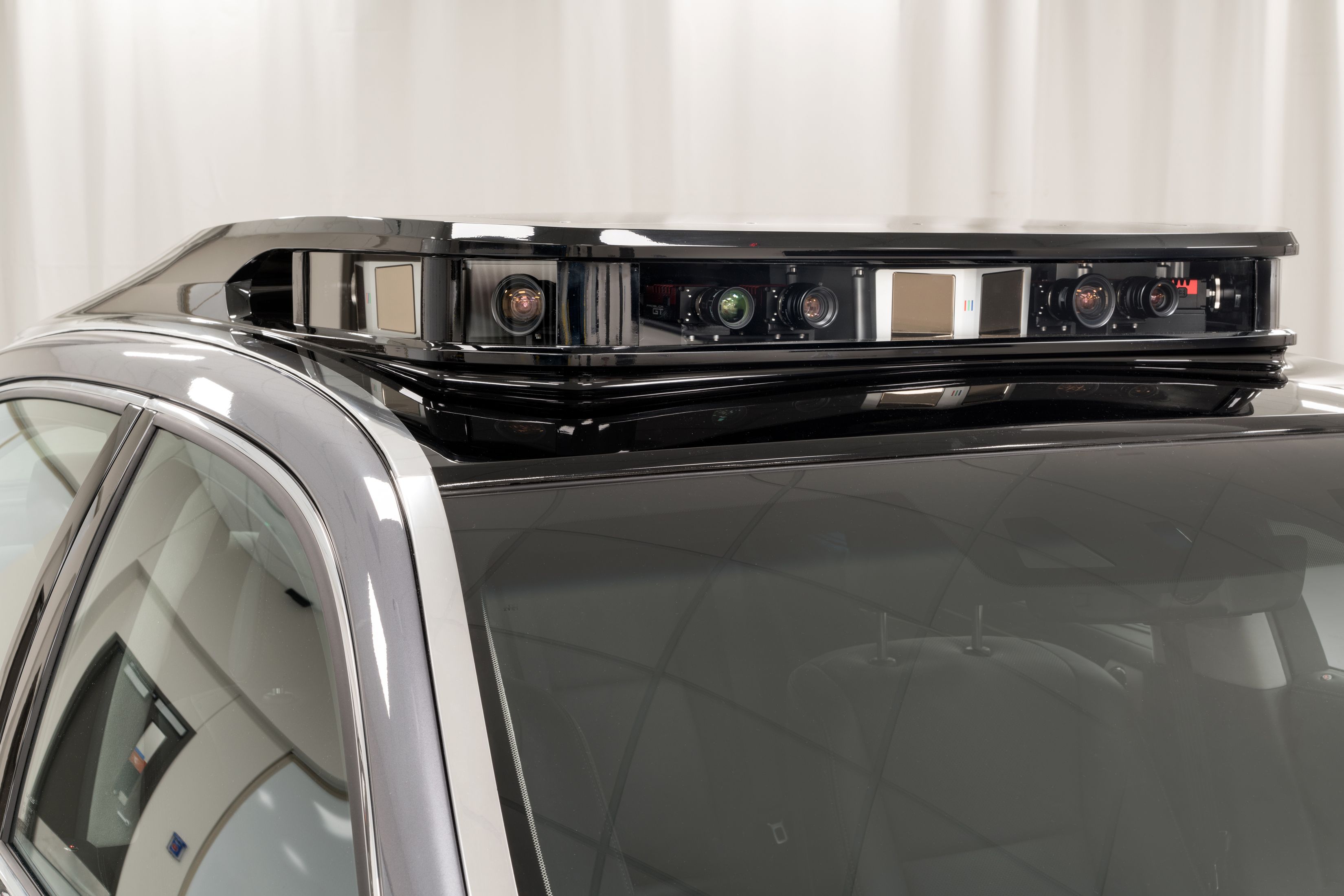The Toyota Research Institute has announced plans to bring its next-generation Platform 3.0 automated driving vehicle to the Consumer Electronics Show in Las Vegas next week. Platform 3.0 is an autonomous test car that’s built on a real-life Lexus LS600hL. According to TRI, the test car incorporates sensors and cameras into its body, a development that does away with today’s setup of installing these elements as attachments on the body of the car. In addition, Platform 3.0 also has a panel of sensors on the roof that helps it become one of the most perceptive autonomous test vehicles on the road today.
Platform 3.0 is not a typical concept vehicle. It’s not even a “concept vehicle” in the traditional sense of the word. The gist of the concept is to present a different way of incorporating Toyota’s new automated vehicle technology by blending the sensory equipment into the vehicle while maintaining a sleek and elegant design that can be packaged in a way that remains easy to reproduce on a production scale.
A big part of Platform 3.0’s appeal is giving drivers and occupants better perception capabilities while they’re inside the car. This is where the plethora of new sensors come in, one of which is a Luminar LIDAR system that comes with a 200-meter, 360-degree range. This is notable because earlier versions of the technology only tracked forward direction. The system functions on the back of four high-res LIDAR scanning heads that help it better see dark objects in all directions. The concept also has shorter-range LIDAR sensors found on all four sides of the vehicle, one on each front quarter panel and another on the front and rear bumpers, respectively. These sensors help detect small and low-level objects, including debris, animals, and even small children.
The development of the perception technology is just one aspect of Platform 3.0. The other part of it lies in its design, something that TRI developed with the help of Michigan-based CALTY Design Research and engineers at Toyota Motor North America Research and Development. A big part of what we’ll see in the concept is the rooftop panel. While it still looks like a traditional roof, the panel itself carries concealed sensors and cameras, a step up from the “spinning bucket LIDAR sensors that we normally see on autonomous vehicles. Not only does it make the car more aesthetically pleasing, but it also streamlines a lot of Toyota’s new gadgetry in a non-disruptive way. Designers even found time to embellish the whole thing with chrome trim. That tells you that this concept is as much about retaining design fluidity as it is about incorporating all these state-of-the-art sensors and cameras.
We’re going to see Platform 3.0 for the first time at CES next week. Beyond that, there are already plans to produce these panels at low volumes sometime in the spring, possibly for further development. In other words, this enterprising new development from Toyota has a big chance of being adapted for actual production use.
References
Lexus LS
Read our full review on the 2018 Lexus LS Hybrid.
Read more CES news.
Read more Lexus news.



